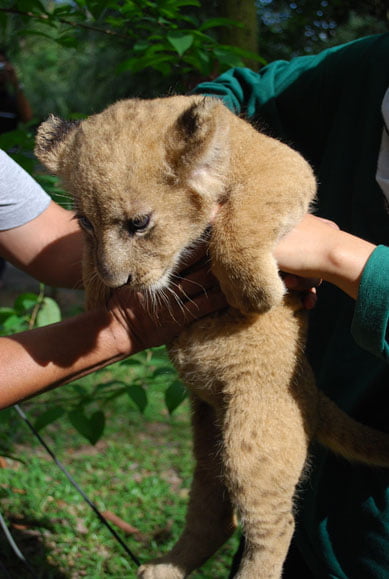Cuddling cats – the rise in desire for human-animal interaction
There’s plenty of information out there strong in its belief that people having a memorable experience with an animal in a captive setting will want to protect that animal. Does this leave zoos with the difficult question of which of its creatures are suitable for petting – as nowadays there’s nothing more memorable than a selfie – and which animals are definitely not on the cards when it comes to interaction? And more importantly, when those animals are chosen, how does a zoo answer the tricky questions about how an animal’s welfare may or may not be impacted by said interaction?
More and more establishments are offering interactive experiences. The World Association of Zoos and Aquariums (WAZA) clearly states that each and every one of these interactions should be assessed for its impact on the welfare of the animals concerned. It talks about applying ongoing welfare assessment and monitoring, taking into account the frequency of interactions, the amount of people involved and the kind of contact. But how exactly does a zoo assess whether a tiger cub is happy to be handled by half a dozen different people every day. Whether the sight, sound and smell of all those new people is scary for it and whether it enjoys being taken from its litter mate and passed around on people’s laps, or whether it’s indifferent to the whole experience. Tricky isn’t it? Should a zoo be looking at whether the interaction is a positive one for the animal concerned, or just not a negative one?
And how about the bigger picture of animals entertaining us in these interactive experiences. Many people won’t go to a circus to see performing animals because they think it’s cruel and inhumane, yet they may happily let an animal sit next to them and wait until a selection of photos is taken. Back to this memorable experience, are interactive experiences actually fuelling people’s desire to get a little too up close and in contact with wild animals in the wild. This is something which can lead to disastrous consequences for animal welfare and wild animal populations – did you see the hundreds of olive ridley sea turtles disturbed while nesting on a beach on Costa Rica, turtles that take decades to reach sexual maturity.
We now have walking with lions in Africa, a very questionable practice as most captive bred lions are thought to end up in the lucrative canned hunting industry. Within domesticated animals we now have cat cafes, where numerous cats are available for petting and stroking while you blow on your red bush tea or stir your vanilla latte. Animal welfare organisations seriously question these places, where usually solitary cats are forced into close contact with up to a dozen others and surrounded by people demanding they interact with them.
So, what are zoos to do? Are they to consider the animal and human welfare implications of every interaction, continuing to offer certain experiences that are suitable for both – because it’s clear that memorable experiences may help protect nature and an individual’s affinity with conservation. Or, as more and more questions are asked of them in relation to the welfare of wild animals in captivity, is it time human-animal interaction was scaled back, rather than being catapulted forward? Because does this ever-growing population of selfie-obsessed individuals really care about these animals, their welfare and their future survival, or is it just exploitation and entertainment, and all the things zoos claim not to be.
Image © Hannah 50 (own work) LOKE SENG HON, CC BY-SA 3.0





